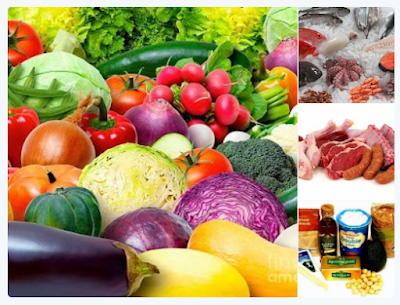Today I am sharing an article by Mark Sisson, he writes:
"When you go to a grocery store, you’ll see a lot of different kinds of olive oil – different colours, from almost clear to yellow to deep green, different descriptors on the label, and vastly different price ranges.
Which one goes with which application? How does the taste compare? Is the expensive stuff worth the money? In this article, we’re going to go through it all.
Virgin, extra virgin, light, blended… what does it all mean? Here, we will go through the different types of olive oil and the pros and cons of each.
Virgin Olive Oil
Virgin olive oil is produced only by physical means, rather than by chemical treatment. The best stuff comes from only ripe olives (as green and overripe olives produce bitter and rancid oil, respectively) ground into a paste using millstones or steel drums. By definition, a virgin olive oil has not undergone any processing other than washing, decanting, centrifuging, and filtering (although none of these are required for virgin oil, nothing else is permitted). Some heat can be applied and, as long as it doesn’t alter the composition of the oil, the process can still be dubbed virgin pressing.
Extra Virgin Olive Oil
Extra virgin olive oil is extracted from the first press. As with virgin olive oil, processing involves only washing, decanting, centrifuging, and filtering. Low heat can be applied as long as it does not alter the quality of the olive oil.
Extra virgin olive oil is widely regarded as the pinnacle of olive oils. According to the International Olive Oil Council, extra virgin olive oil must contain at most 0.8% acidity, with a “superior taste.” Extra virgin can also be unfiltered (which deepens the flavour and reduces shelf life) or cold-pressed (wherein the pressing is slow and gradual, without generating much frictional heat, and which results in better flavours). Most extra virgin also contains the most polyphenols, which are some of my favourite antioxidants.
Extra virgin olive oil will generally be more expensive than virgin olive oil of similar quality.
Light Olive Oil
Light olive oil doesn’t have fewer calories than the other varieties of olive oil. It just lacks flavour and colour. It may also contain less of the beneficial polyphenol compounds that make olive oil so appealing.
Refined Olive Oil
Refined olive oil takes poor quality (either due to acid content or other defects) virgin oil and processes it until it is edible. Refining is usually done with charcoal filters or chemical processes. Refined olive oil is more shelf-stable, but it’s also essentially flavourless.
Olive Pomace Oil
Olive Pomace oil is extracted from the olive solids (pomace) leftover from the pressing, usually using chemical solvents. This isn’t culinary olive oil, and it’s definitely not meant to be eaten. Most olive oil-based soaps you see are made with olive pomace oil.
Blended Olive Oil
Blended olive oils are, in my opinion, to be generally avoided. While it can be a blend of different olive oil varieties, most often you’ll find it blended with cheaper industrial seed oils like canola or some other vegetable oil. You’ll get increased shelf life and polyunsaturated fat content along with less monounsaturated fat. No thanks.
What to Look For When You Buy Olive Oil – A Few Things to Keep in Mind
Just because something is labelled “extra virgin,” though, doesn’t mean it’s necessarily good. In fact, rather than buying a mid-priced or inexpensive bottle of Italian or Greek extra virgin olive oil, you might look for a domestic brand. Those extra virgins are fragile oils, and the journey from the Mediterranean can result in a bland bottle. I’ve also read that a lot of the extra virgin that makes it over here to the USA in mass quantities isn’t worth it (and that’s been my experience, sadly).
When choosing an oil, treat it a bit like wine and engage your senses. Smell it – it should smell like olives, very clean and almost like grass and apples. Don’t rely too much on sight – the colour of an oil is easily manipulated. Instead, go with the one that really matters: taste. Take a half teaspoon or so into your mouth and swirl it around (again, like wine). First and foremost, it should taste like olives, but there are other flavours in the best oils. Grassiness, apples, even fennel are pretty common in really great olive oil. If it’s metallic-tasting or has a faint paint thinner scent, it’s probably rancid. If it’s light, delicious, and barely coats your mouth (without feeling greasy), it’s probably great stuff. And then my favourite part, the finish. The best oils from the first harvest with the highest antioxidant content will leave a spicy finish on your throat, like mild peppers.
Just experiment. Keep trying them until you find one you like. The different varietals are all unique, so your journey might be a long one.
The thing with olive oil is that you need to use it the right way. The best extra virgin, unfiltered, cold-pressed olive oil should never be used to sauté something because heat can mar the delicate flavour. Instead, use high quality stuff as a finisher. Cook with butter then top the dish off with your prized extra virgin oil. That way, the taste and nutritional benefits are retained without wasting any of your precious nectar on a cast iron skillet.
Olive Oil Storage
Store your oil in a cool, dark place. Heat and light are now your biggest enemies (be sure to buy an oil in a dark bottle). Extra virgin is the least stable, so keep it at a good temperature (somewhere between 57 and 65 degrees, like a wine cellar). You can refrigerate other olive oils if your kitchen is too hot, but refrigerating extra virgin olive oil can disrupt the delicate flavours. If you get extra virgin that’s tasty enough, of course, you won’t have to worry about long-term storage – you’ll be guzzling it straight out of the bottle."
These above words by Mark and all relevant links can be seen at original article here
Two Related Posts You May Wish To Read
The Best Oils To Cook WithChoosing the best oils to cook with doesn’t need to be daunting, it simply comes down to a simple two-step approach. Firstly, is the oil or fat in its nutritious raw form and suitable for human consumption in small amounts? And secondarily, does the oil have a high smoke point, in that it can resist high temperatures before oxidizing, which can create harmful free-radicals? More to read here
Olive Oil, some facts and information
Olive oil is probably the most widely-used oil in cooking, olive oil is pressed from fresh olives. It's mainly made in the Mediterranean, primarily in Italy, Spain and Greece (though countries such as America and Australia also produce it). Much like wine-making, climate, soil and the way the olives are harvested and pressed all have an impact on an oil's character. More to read here
Do you like to use Olive Oil? I always have some Extra Virgin Olive Oil in my Low Carb Pantry
Dear reader, you will find a variety of articles and recipe ideas within this blog. Please note, not all may be suitable for you. If you may have any food allergies, or underlying health issues these must always be taken into account. If you are a diabetic and not sure how certain foods may affect your blood sugars, test is best, i.e. use your meter.
All the best Jan








































